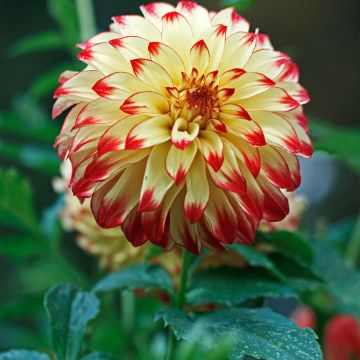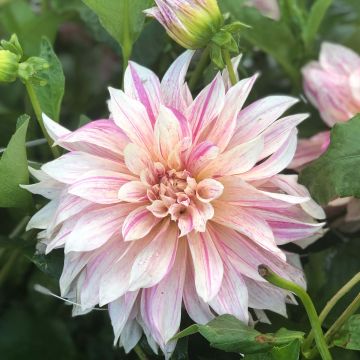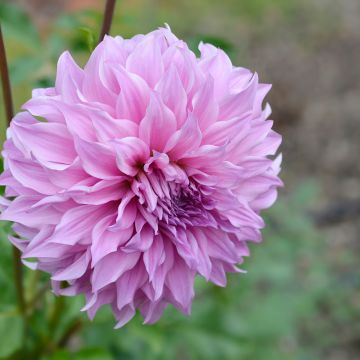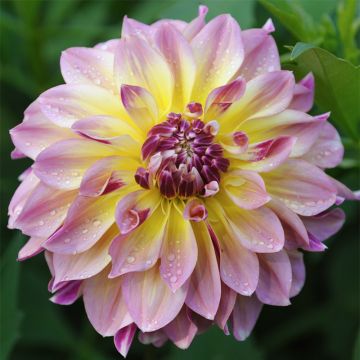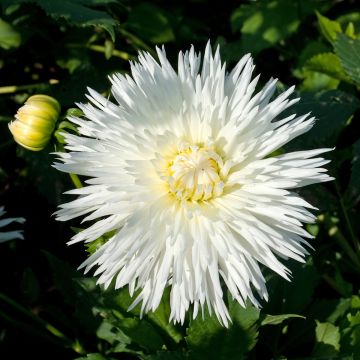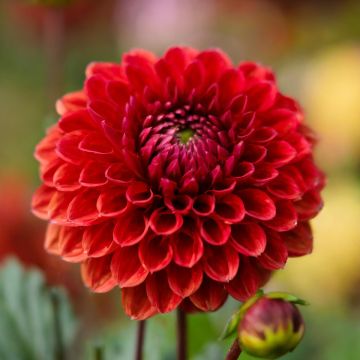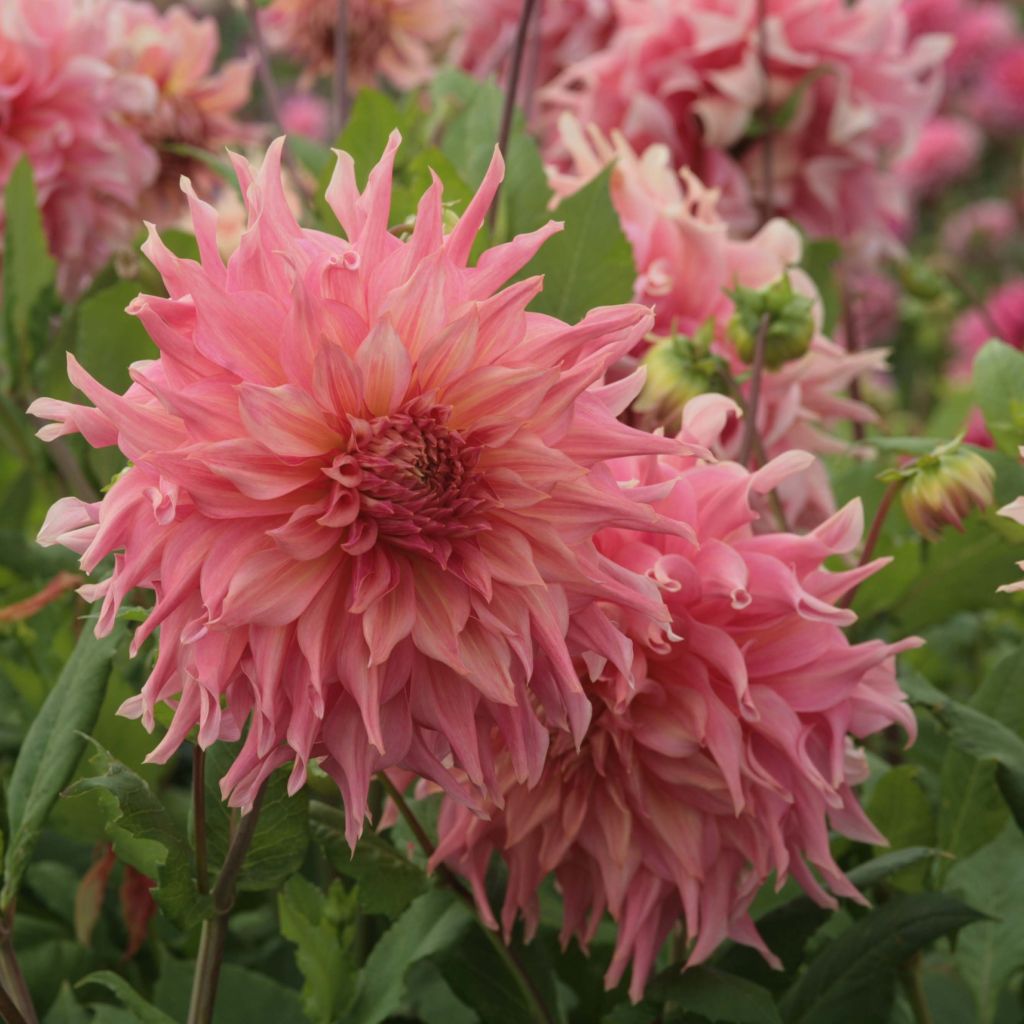

Dahlia géant Penhill Watermelon
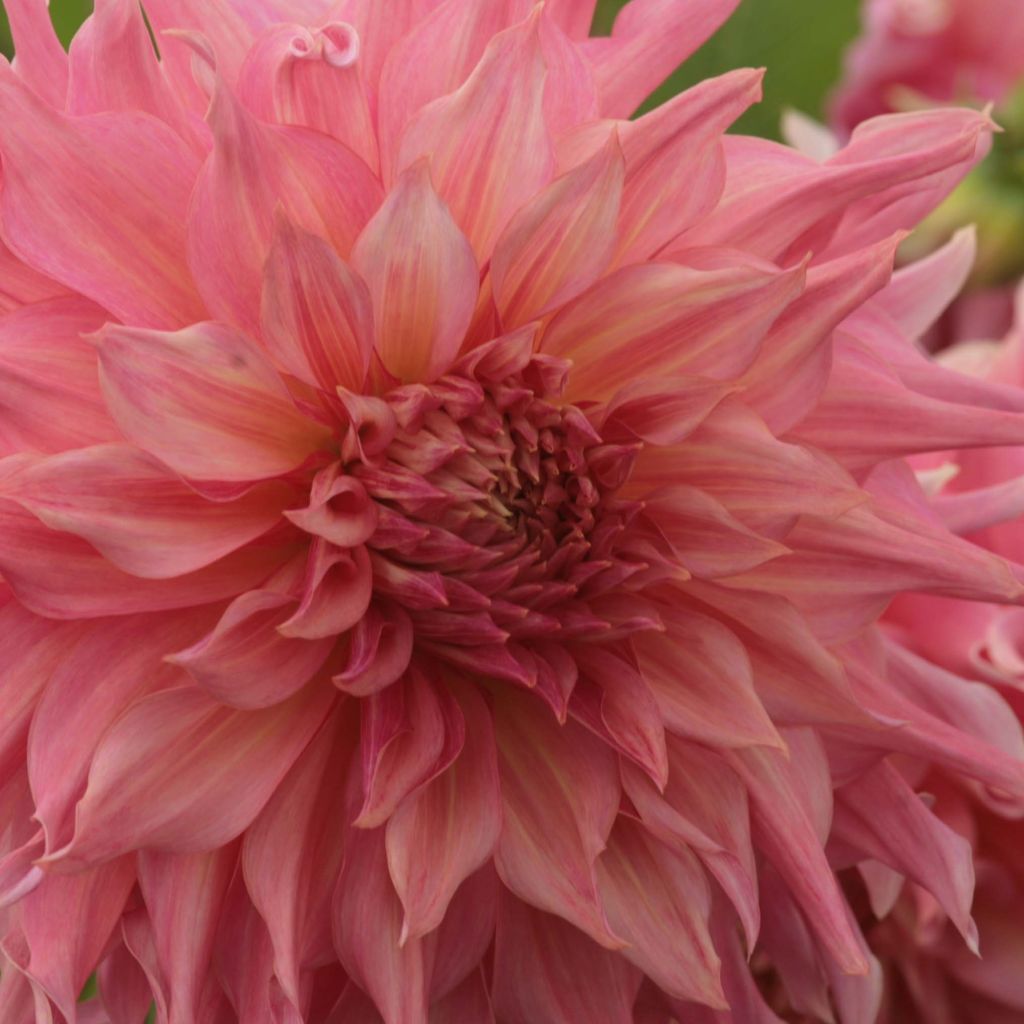

Dahlia géant Penhill Watermelon
Dahlia Penhill Watermelon
Dahlia Penhill Watermelon
Dahlia
Bulbs replanted in March and producing shoots The leaves emerged from the ground about a week ago.
Nathalie, 13/04/2021
This item cannot be shipped to the selected country
Delivery charge from €5.90
More information
Schedule delivery date,
and select date in basket
This plant carries a 6 months recovery warranty
More information
We guarantee the quality of our plants for a full growing cycle, and will replace at our expense any plant that fails to recover under normal climatic and planting conditions.
From €5.90 for pickup delivery and €6.90 for home delivery
Express home delivery from €8.90.
Does this plant fit my garden?
Set up your Plantfit profile →
Description
The 'Penhill Watermelon' Giant Decorative Dahlia is a fabulous variety whose flowers, reaching the size of a plate, are a stunning frill of twisted and pointed petals randomly combining different shades of pink, coral and salmon, warmed with yellow at the heart. This tall variety blooms for a long time, from July to October. It is an exceptional Dahlia, both for the shape and size of its inflorescences and for their colour. Its long, sturdy stems are perfect for cut flowers.
Dahlias belong to the asteraceae family and are originally from the high plateaus of Mexico. At present, the few 25,000 horticultural varieties obtained by humans have invaded, to our great pleasure, gardens all over the world. The 'Penhill Watermelon' variety, introduced in 1999, is part of the giant Dahlias for two reasons: first, because it is tall on the stem, 1.20m (4ft) tall (or even 1.50m (5ft)) by 60cm (24in) wide, and secondly because its inflorescences measure 25 to 30cm (10 to 12in) in diameter. It is also classified as a decorative Dahlia, which is a horticultural category defined by the shape of the flower. In this group, the coloured ligules of the head are regularly arranged in a spiral, they can be curved towards the stem or fringed, for example. The unusual shape of the Penhill Watermelon flowers classifies them in the sub-category of decorative Dahlias with informal flowers. The flowering of this variety starts in July and ends in October. The heads are composed of a multitude of ligules, more or less turbinate, as in some cactus Dahlias. Their colour is a mix of pink, more or less intense coral pink, salmon pink towards the heart of the flower, dressed with a more yellow glow. Each 'petal' is more or less flamed with purplish pink. The habit is bushy and erect, and the very branched stems are hollow. Its leaves are opposite, pinnatisect, which means they are divided into 3 or 5 toothed lobes. The leaves and stems are a bright and light green.
To extend the flowering period and promote floral reblooming, take care to remove faded flowers. Even better, cut them regularly to create attractive colourful bouquets by combining several varieties.
'Penhill Watermelon' is an exceptional cut flower that will look good, for example, in the decoration of a wedding venue, with white lilies, mignonette and arum lilies. In the garden, its tall stature makes it suitable for the back of perennial plant borders, where it can lean on bushes. It pairs particularly well with pink, mauve and white blooms, including those of roses and perennial salvias. In a flower bed, it will perfectly match large "thistles" (cardoon and artichoke), Japanese anemones, fennel and cosmos, for example. With tall sedums and miscanthus, it will also make a lovely original mix.
As a star plant in borders and herb gardens, Dahlias confidently accompany the most beautiful flowers but are also appreciated alongside vegetable plants. In Mexico, this tuberous plant was initially cultivated as a root vegetable for consumption. However, its poor taste qualities assigned it the status of an ornamental plant. Since then, the interest in their beautiful exuberance has never waned.
Report an error about the product description
Dahlia Penhill Watermelon in pictures
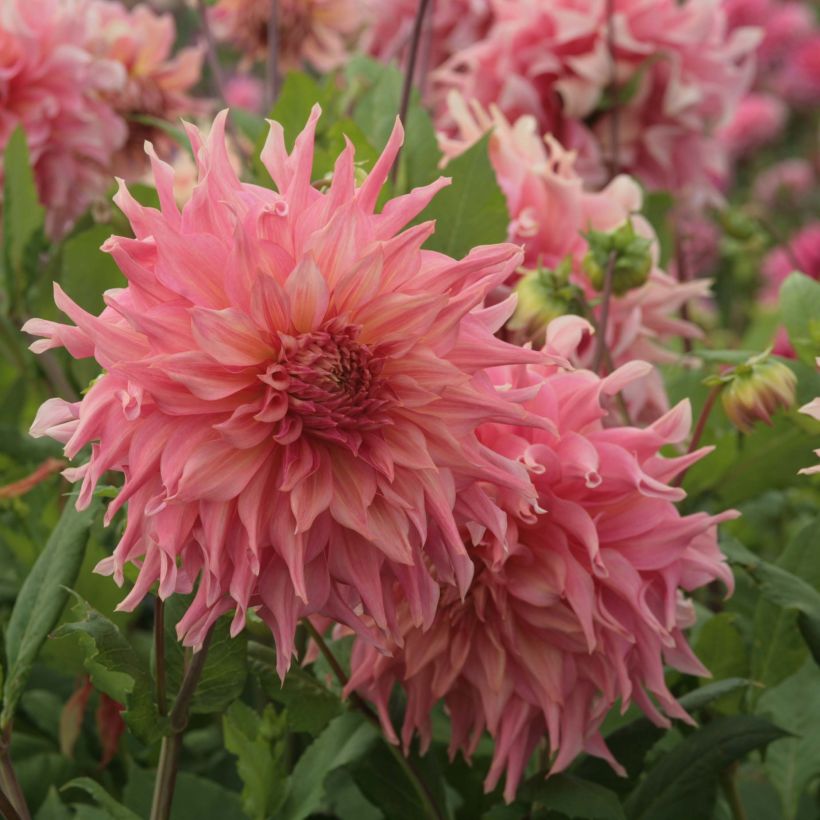

Plant habit
Flowering
Foliage
Botanical data
Dahlia
Penhill Watermelon
Asteraceae
Dahlia
Cultivar or hybrid
Other Giant Dahlia
Planting and care
Planting period
Intended location
Care
-
, onOrder confirmed
Reply from on Promesse de fleurs
Dahlias
Haven't found what you were looking for?
Hardiness is the lowest winter temperature a plant can endure without suffering serious damage or even dying. However, hardiness is affected by location (a sheltered area, such as a patio), protection (winter cover) and soil type (hardiness is improved by well-drained soil).

Photo Sharing Terms & Conditions
In order to encourage gardeners to interact and share their experiences, Promesse de fleurs offers various media enabling content to be uploaded onto its Site - in particular via the ‘Photo sharing’ module.
The User agrees to refrain from:
- Posting any content that is illegal, prejudicial, insulting, racist, inciteful to hatred, revisionist, contrary to public decency, that infringes on privacy or on the privacy rights of third parties, in particular the publicity rights of persons and goods, intellectual property rights, or the right to privacy.
- Submitting content on behalf of a third party;
- Impersonate the identity of a third party and/or publish any personal information about a third party;
In general, the User undertakes to refrain from any unethical behaviour.
All Content (in particular text, comments, files, images, photos, videos, creative works, etc.), which may be subject to property or intellectual property rights, image or other private rights, shall remain the property of the User, subject to the limited rights granted by the terms of the licence granted by Promesse de fleurs as stated below. Users are at liberty to publish or not to publish such Content on the Site, notably via the ‘Photo Sharing’ facility, and accept that this Content shall be made public and freely accessible, notably on the Internet.
Users further acknowledge, undertake to have ,and guarantee that they hold all necessary rights and permissions to publish such material on the Site, in particular with regard to the legislation in force pertaining to any privacy, property, intellectual property, image, or contractual rights, or rights of any other nature. By publishing such Content on the Site, Users acknowledge accepting full liability as publishers of the Content within the meaning of the law, and grant Promesse de fleurs, free of charge, an inclusive, worldwide licence for the said Content for the entire duration of its publication, including all reproduction, representation, up/downloading, displaying, performing, transmission, and storage rights.
Users also grant permission for their name to be linked to the Content and accept that this link may not always be made available.
By engaging in posting material, Users consent to their Content becoming automatically accessible on the Internet, in particular on other sites and/or blogs and/or web pages of the Promesse de fleurs site, including in particular social pages and the Promesse de fleurs catalogue.
Users may secure the removal of entrusted content free of charge by issuing a simple request via our contact form.
The flowering period indicated on our website applies to countries and regions located in USDA zone 8 (France, the United Kingdom, Ireland, the Netherlands, etc.)
It will vary according to where you live:
- In zones 9 to 10 (Italy, Spain, Greece, etc.), flowering will occur about 2 to 4 weeks earlier.
- In zones 6 to 7 (Germany, Poland, Slovenia, and lower mountainous regions), flowering will be delayed by 2 to 3 weeks.
- In zone 5 (Central Europe, Scandinavia), blooming will be delayed by 3 to 5 weeks.
In temperate climates, pruning of spring-flowering shrubs (forsythia, spireas, etc.) should be done just after flowering.
Pruning of summer-flowering shrubs (Indian Lilac, Perovskia, etc.) can be done in winter or spring.
In cold regions as well as with frost-sensitive plants, avoid pruning too early when severe frosts may still occur.
The planting period indicated on our website applies to countries and regions located in USDA zone 8 (France, United Kingdom, Ireland, Netherlands).
It will vary according to where you live:
- In Mediterranean zones (Marseille, Madrid, Milan, etc.), autumn and winter are the best planting periods.
- In continental zones (Strasbourg, Munich, Vienna, etc.), delay planting by 2 to 3 weeks in spring and bring it forward by 2 to 4 weeks in autumn.
- In mountainous regions (the Alps, Pyrenees, Carpathians, etc.), it is best to plant in late spring (May-June) or late summer (August-September).
The harvesting period indicated on our website applies to countries and regions in USDA zone 8 (France, England, Ireland, the Netherlands).
In colder areas (Scandinavia, Poland, Austria...) fruit and vegetable harvests are likely to be delayed by 3-4 weeks.
In warmer areas (Italy, Spain, Greece, etc.), harvesting will probably take place earlier, depending on weather conditions.
The sowing periods indicated on our website apply to countries and regions within USDA Zone 8 (France, UK, Ireland, Netherlands).
In colder areas (Scandinavia, Poland, Austria...), delay any outdoor sowing by 3-4 weeks, or sow under glass.
In warmer climes (Italy, Spain, Greece, etc.), bring outdoor sowing forward by a few weeks.


































